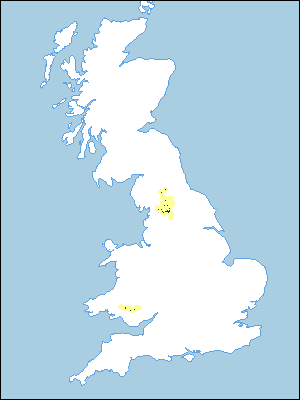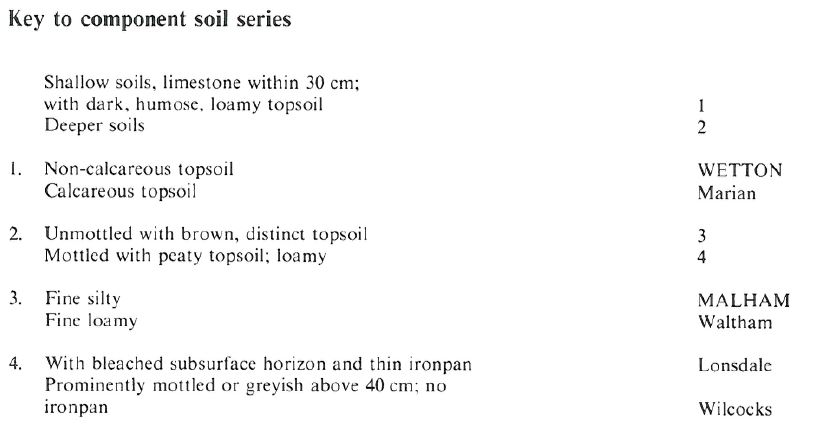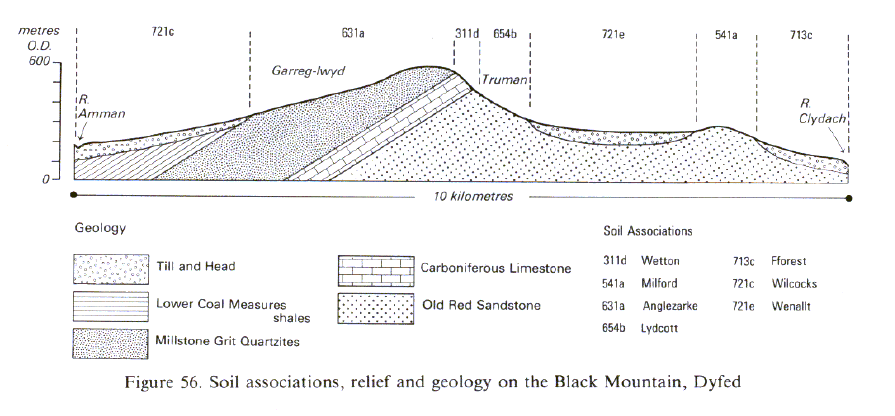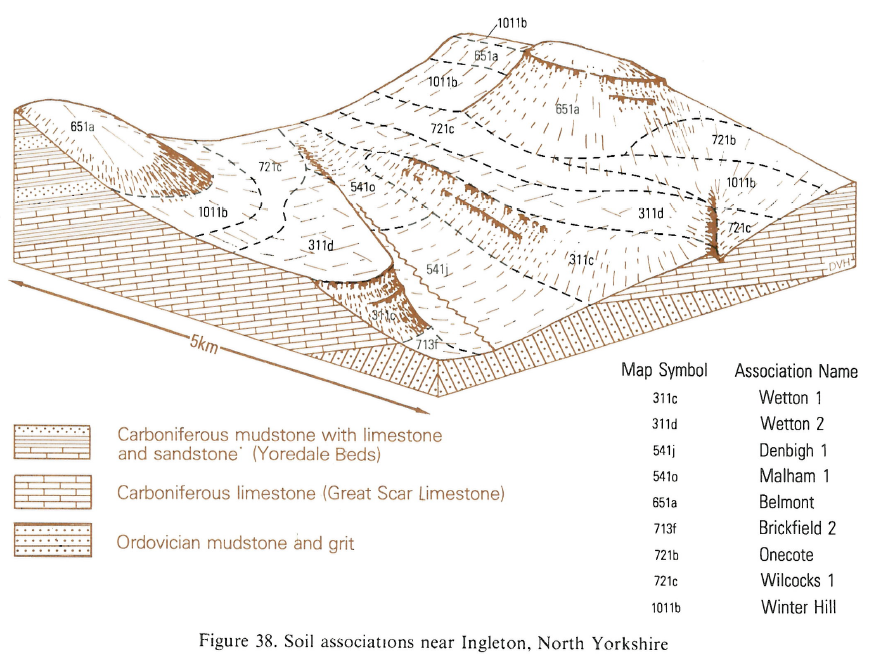
Soil Associations
0311d WETTON 2
Soil and site characteristics
Very shallow humose loamy upland soils over limestone. Some well drained deeper silty soils. Extensive limestone pavements and crags.
Geology
Carboniferous limestone
Cropping and Land Use
Stock rearing on moorland and herb-rich grassland habitats of good grazing value; recreation.
Component soil series
| Subgroup | Series name | Percentage | WRB 2006 link |
|---|---|---|---|
| 3.11 | WETTON | 50% | Umbric Leptosols |
| 5.41 | MALHAM | 15% | Eutric Endoleptic Cambisols |
Covers 166 km2 in England and Wales
Soilscapes Classification
| 16 |
Very acid loamy upland soils with a wet peaty surface |
0311d WETTON 2
Detailed Description
This association occurs on the Carboniferous Limestone in North Yorkshire. Smaller areas are found in the Pennines as far north as Teesdale and also in south Wales. The land consists of gently sloping benches between 200 and 565 m O.D., broken by limestone scars and pavement. The climate is cold, wet and windy. The dominant soils are the humose and shallow Wetton series, humic rankers, with pockets of deeper, more or less stoneless well drained silty Malham soils, typical brown earths. In places, bare rock covers more than half the ground, as crags or as limestone pavement, with its characteristic network of grikes dividing the rock into large blocks or clints, with potholes and soil-filled sink holes. The association is mainly in Wharfedale, the Malham and Ingleton districts and Wensleydale and covers 149 km². The fine earth fraction of most soils is probably of aeolian origin, but where texture is fine loamy the parent material is probably a local till. Because of the wet climate most soils are strongly leached and acid, in spite of recycling of calcium by plants from the limestone beneath. Where soils are not completely leached of calcium carbonate, the Marian series a humic rendzina, is recognized. Where the soils are deep, often under heather, stagnopodzols belonging to Lonsdale series occur. Rare patches of till are characterized by typical stagnohumic gley soils, Wilcocks series.
Soil Water Regime
The thin humose surface horizons of Wetton soils retain water and they shed winter rainwater laterally. However, this water moves only a short distance before entering the limestone by way of the numerous sink holes. As the pockets of Malham soil readily absorb winter rainwater, the combined effect is that there is little surface run-off from this land. The low available water capacity of the main soils makes them susceptible to drought in summer dry spells.
Cropping and Land Use
Because of climate and shallow soils, the land has little agricultural value. It is used mainly for rough grazing, characterized by sheep's fescue (Festuca ovina), fine bent (Agrostis capillaris) and herbs of high grazing value, which contrasts sharply with the vegetation of the nearby Wilcocks and Winter Hill associations. Shallow soil, rocky ground and widespread exposure to wind, make the land unsuitable for forestry. The limestone pavements are of great botanical interest and some areas are in National Nature Reserves (Ratcliffe 1977). Plants thriving in the shady and humid conditions of the deeper grikes are more usually seen in woodland. Patches of semi-natural ash woodland in upper Ribblesdale and upper Wharfedale are of particular interest. The land is much used for recreation, particularly walking.
0311d WETTON 2
Distribution Map
 |
Note that the yellow shading represents a buffer to highlight the location of very small areas of the association.
Keys to component soil series
Northern Region
 |
Typical Landscapes
Wales
 |
Northern Region
 |
All information Copyright, Cranfield University © 2024
Citation: To use information from this web resource in your work, please cite this as follows:
Cranfield University 2024. The Soils Guide. Available: www.landis.org.uk. Cranfield University, UK. Last accessed 18/04/2024
